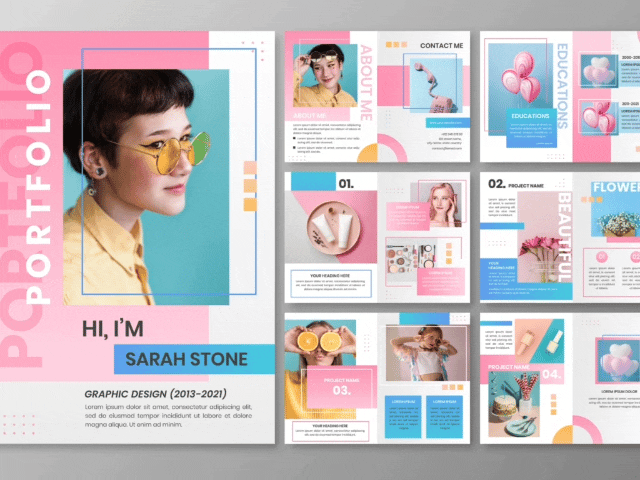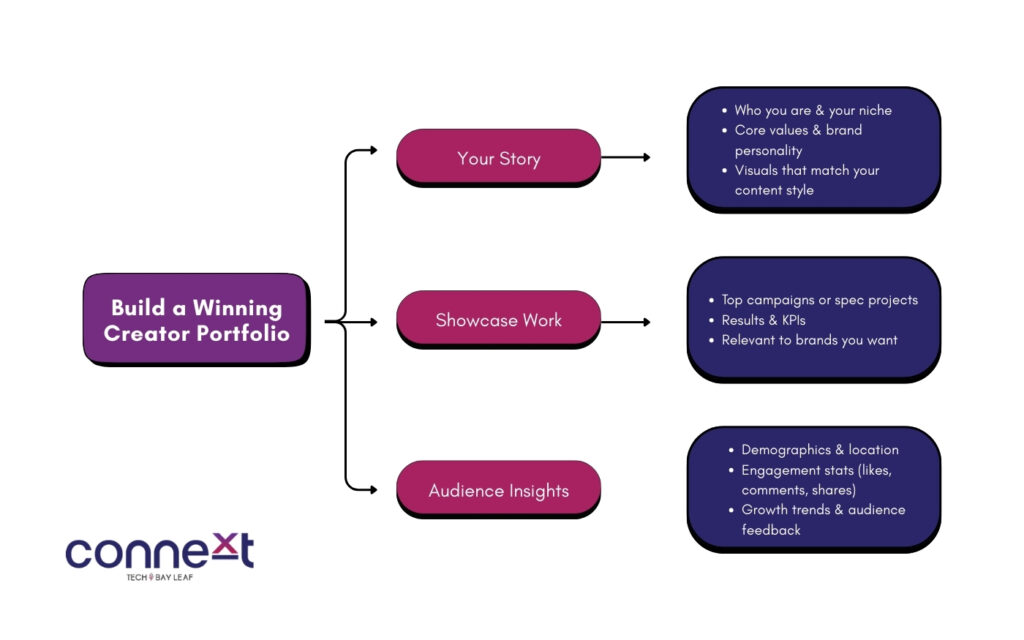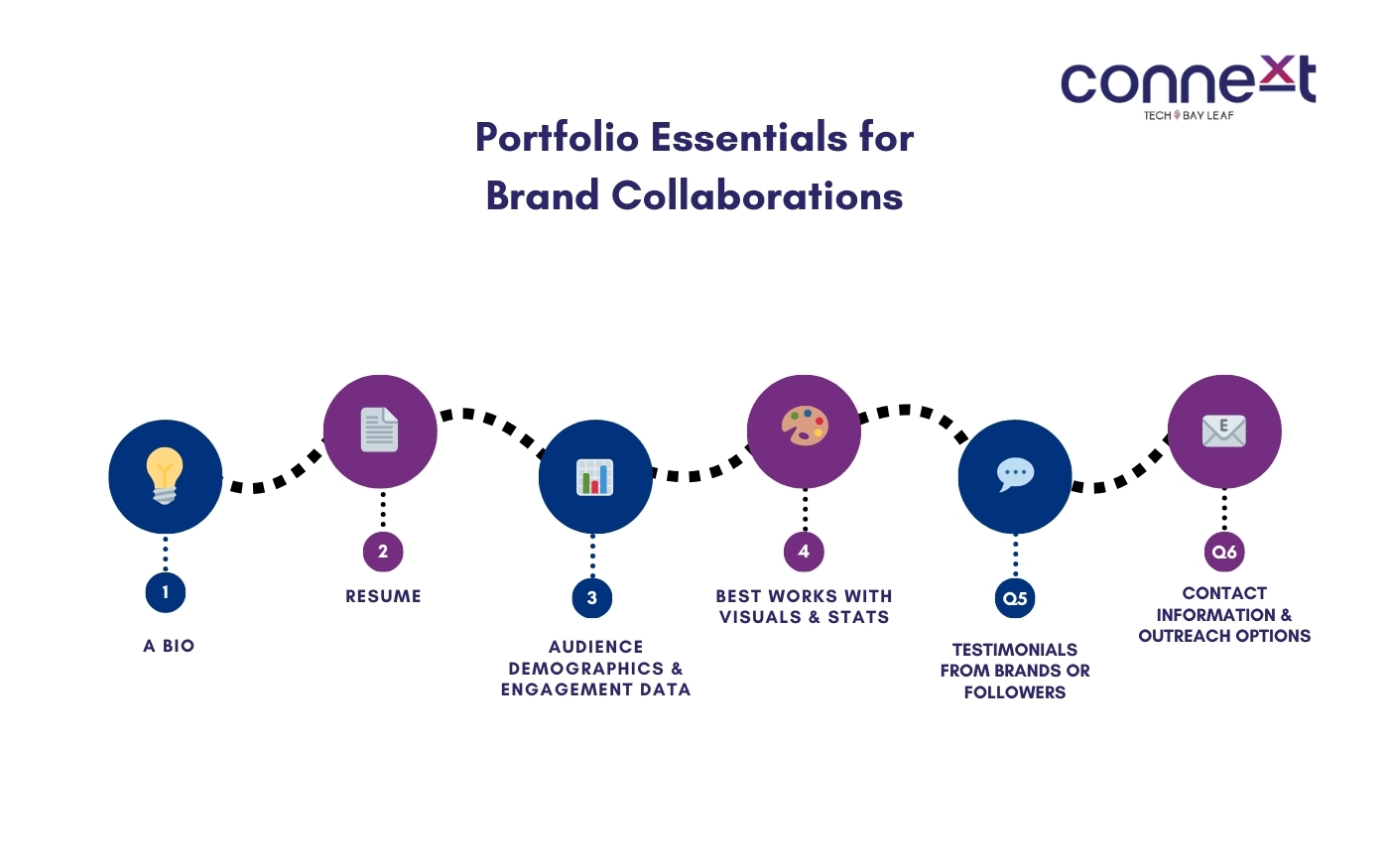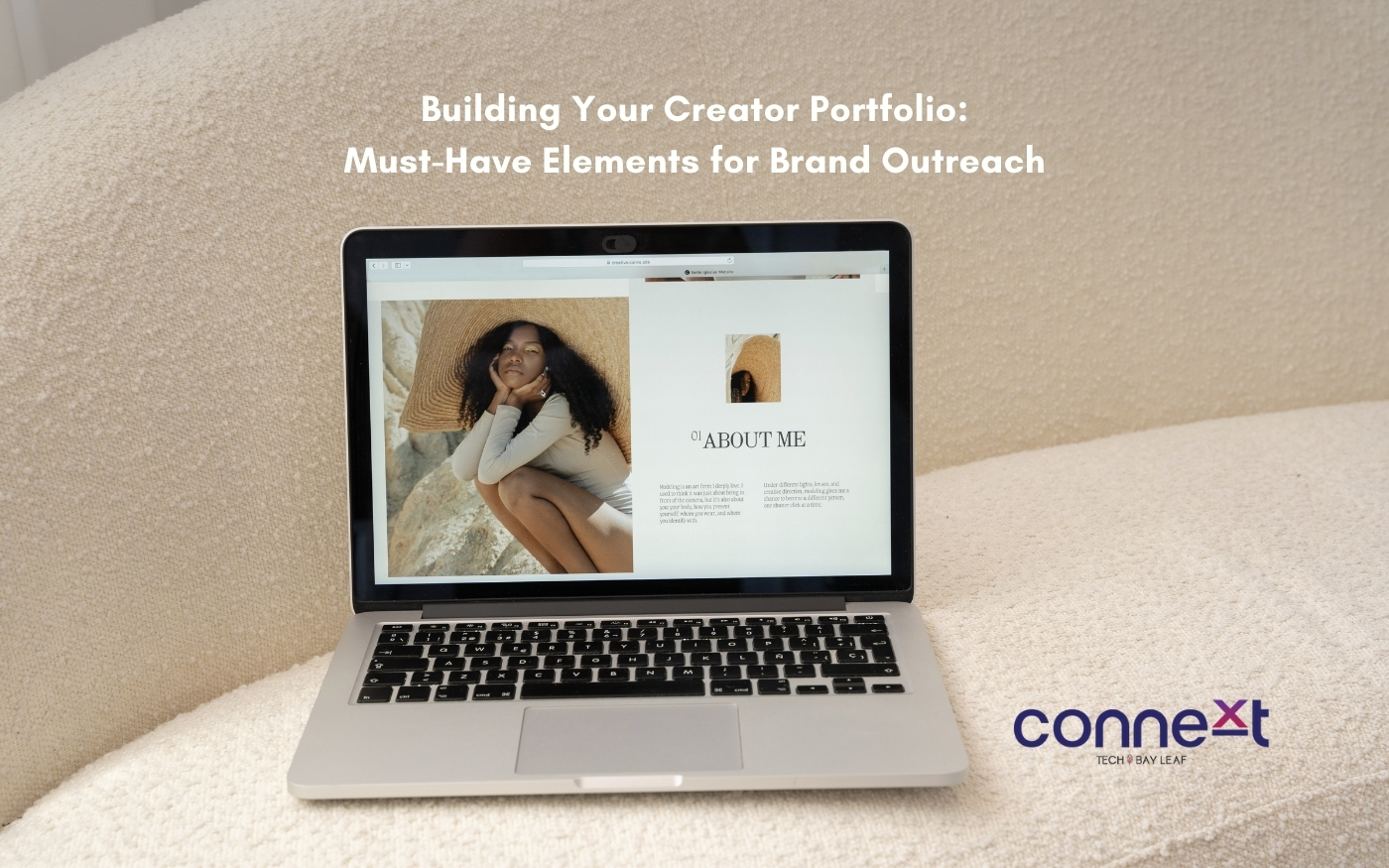A strong creator portfolio is your passport to winning brand deals in 2025. Whether you’re a micro-influencer, UGC creator, or content strategist, brands today want more than just a follower count. They want to see proof of creativity, authenticity, and results. This guide walks you through how to build a creator portfolio that both showcases your work and convinces brands you’re the right partner for their campaigns.
Before taking a closer look at how to build a winning creator portfolio, let’s find out what it is and why it’s a must-have for an influencer or content creator looking to secure a deal.
What Is a Creator Portfolio?
A creator portfolio website (or portfolio website for influencers) is your personalized showcase; a living resume designed for the influencer marketing world. Unlike a single PDF, your site can include updated stats, links to live campaigns, and even embedded content.
There are plenty of content creator portfolio templates available, but the best ones strike a balance between storytelling and analytics. These portfolios contain your personal brand story, case studies, testimonials, and clear contact details.

Why Every Creator Needs a Digital Portfolio
A digital portfolio for creators serves as your professional home base. It’s something you own and control and more than just impressive numbers. It highlights your style, stats, and previous brand work in one easy-to-access space.
For influencers, UGC creators, and digital storytellers, a portfolio for social media collaborations is more than a brag sheet. It shows brands that you take your role seriously, understand their needs, and can deliver high-quality partnerships. In 2025, creators who can prove their value with a well-structured portfolio are the ones who stand out.
Difference Between a Creator Media Kit vs. Portfolio
A creator media kit vs. a portfolio is a common point of confusion. A media kit is typically a short, one-to-two-page PDF highlighting audience demographics, engagement rates, and pricing. It’s quick to send for an initial pitch.
A professional creator portfolio design, on the other hand, is more detailed. It includes campaign highlights, UGC samples, brand testimonials, and your creative process. Think of the media kit as the “teaser” and the portfolio as the “feature film.” For long-term brand sponsorships in 2025, both work best together.
How a Personal Brand Portfolio Builds Trust with Brands
Credibility is currency in influencer marketing. A personal brand portfolio demonstrates consistency in your niche, voice, and values and shows brands you’re selective and aligned and aren’t just chasing any deal.
By creating a personal brand portfolio, you’re essentially saying, “Here’s who I am, here’s how I work, and here’s what others have said about me.” This often tips the scale in your favor during creator outreach strategies for brands.
How to Make a Creator Portfolio That Gets Brand Deals
Whether you’re pitching for brand sponsorships, a UGC portfolio for brand deals, or a portfolio for brand collaborations, a well-documented history of your work increases your chances of securing paid partnerships.
Brands today want transparency. They want to see data-backed results and proof that you can adapt content to different campaigns. Having a portfolio for brand sponsorships in 2025 positions you as a professional, not just a hobbyist.

Must-Have Elements for a Creator Portfolio
1. About You & Personal Brand Story
Your outreach portfolio for digital creators should begin with a strong introduction. Share your background, niche, and what makes your voice unique. Highlight your values and how they connect with your content.
- Showcase your niche, values, and brand voice clearly.
- Add personality while staying professional.
- Use visuals and a tone consistent with your social presence.
Examples of personal brand portfolios that stand out usually weave storytelling with data. For example, a fitness influencer might share their transformation story alongside stats about their audience’s interest in wellness products.
2. Showcase of Work & Case Studies
This is the heart of your creator portfolio. Use visuals, videos, and case studies to illustrate how you’ve helped brands achieve their goals.
- Share campaign highlights, KPIs, and measurable outcomes.
- Select work that aligns with the industries or niches you want to attract. For example, if you’re aiming for beauty partnerships, feature skincare or cosmetics campaigns first.
- If you’re new, build a UGC portfolio for brand deals by creating spec content (mock campaigns) that shows your creative potential.
The more you can prove your value with results and creativity, the easier it becomes to secure winning brand partnerships as a creator.
3. Audience Insights and Analytics
Data is the proof point that sets your portfolio apart. While creativity shows what you can do, analytics prove that it works. Brands want to see that your audience is not only real but also engaged and aligned with their target market.
Demographics: Share age, gender, and geographic breakdowns of your followers. This helps brands instantly see audience fit.
Engagement metrics: Highlight likes, comments, shares, and saves. Don’t just show reach—show meaningful interactions that prove influence.
Growth trends: If your following is growing steadily, include simple charts or screenshots to show upward momentum.
Audience feedback: Include examples of comments, polls, or messages that demonstrate how your content sparks conversation and trust.
The key here is balance—keep it visual and scannable. Use charts, screenshots, or highlights that bring the numbers to life. Analytics, paired with creative storytelling, make your portfolio stronger because they show both art and impact.

Portfolio Essentials for Brand Collaborations
To recap, here are the portfolio essentials for brand collaborations every creator should include:
- A bio
Your bio is often the first impression, so keep it short and impactful. Highlight the type of marketing you do, who you serve, and the value you bring. A clear statement of expertise or mission helps set the tone and shows brands what you stand for. - Resume
Make your resume interactive. Focus on roles tied to your strongest work and highlight the results you delivered. Include titles, companies, and the outcomes you achieved in each role. - Audience demographics & engagement data
Show that your audience overlaps with a brand’s ideal customers by including basic demographics such as age, gender, and location. Pair this with engagement data. Reach shows size, but engagement rates prove influence which is how actively your audience interacts with your content. Highlight feedback or insights from your community to prove influence and strengthen your pitch. - Best works with visuals & stats
Showcase your best work with a dedicated Projects page featuring 3–5 strong samples. For each, include visuals, a short overview, and clear results backed by data. Keep case studies focused so brands quickly see what you did and why it worked. - Testimonials from brands or followers
Testimonials are powerful social proof, so include specific quotes from past clients or collaborators. Place them near related projects or in a dedicated section with names, titles (if applicable), and photos. Highlight recognizable brands when possible to build instant trust and credibility. - Optional: Industry recognition and achievements
Mention awards, certifications, and press mentions. Use visuals like badges or logos for easy scanning and quick recognition. Short blurbs like “Top Freelancer on Upwork 2023” or media features add instant credibility to your portfolio. - Contact information & outreach options
Make it easy for visitors to get in touch by including your name, email, a short message form, and links to key platforms like LinkedIn or Instagram. Visuals like an Instagram feed or a sticky “Let’s talk” button can keep contact options accessible across your site.
When brands review your portfolio for social media collaborations, they should instantly understand your value and how to work with you.
Creative Outreach for Micro Influencers
If you’re a creator with a small following, don’t underestimate the power of your digital creator portfolio. Many brands are shifting budgets toward micro- and nano-influencers who have high engagement and authentic relationships with their followers.
Pair your creator outreach strategies for brands with a polished portfolio to stand out. Even with fewer campaigns under your belt, showcasing creativity and audience connection can win you deals.
Final Thoughts
A professional creator portfolio design isn’t just about aesthetics. It’s also about strategy. With the right portfolio tips for influencer marketing, you can turn your past work and personality into a compelling pitch for future collaborations.
From UGC samples to full case studies, your portfolio tells brands, “This is why I’m the right creator for you.”
In 2025 and beyond, a well-crafted portfolio remains the key to winning brand partnerships as a creator.
Get Started With Connext
Connext by Tech Bay Leaf makes it easier for brands to find and collaborate with the right influencers by streamlining creator discovery, outreach, and campaign management. From partnering with micro-influencers to spark early traction to scaling larger brand collaborations, Connext—an influencer marketing agency in the US—gives startups the tools to run authentic, data-driven campaigns that build credibility quickly.
Ready to accelerate your growth? Partner with Connext today and make influencer marketing work for your startup.
FAQs
A mix of storytelling and analytics. This includes your brand story, case studies, audience insights, testimonials, and clear contact details.
Not on its own. A media kit is a quick snapshot, but a portfolio gives brands deeper proof of creativity, results, and credibility.
Start small. Showcase your niche, engagement data, and spec UGC campaigns if you don’t have many brand deals yet.
Yes. Portfolios help brands verify authenticity, audience fit, and your ability to deliver results.
A UGC portfolio highlights your content creation skills for brands to repurpose, while an influencer portfolio emphasizes your reach, audience, and influence.


